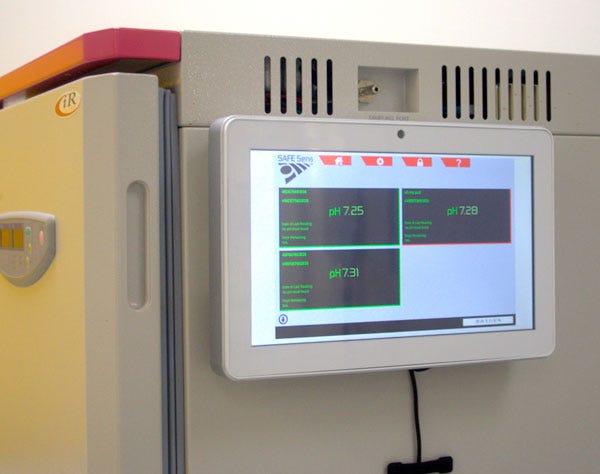New Sensor Technology Promises More Successful In Vitro Fertilization
October 13, 2015
A pH sensor can optimize the chances of couples having a live birth via in vitro fertilization.
Brian Buntz

The in vitro fertilization market is growing at a healthy rate, driven in part by falling fertility rates. From Japan to Western Europe to the United States, the situation is serious enough that it could affect future economic growth. Some countries, like Japan (in which one in six couples is infertile), are offering to help pay for in vitro fertilization procedures.
The IVF procedure can be trying, however, both financially and emotionally, says Russ Aldrich CEO at Blood Cell Storage Inc. (Seattle, WA). "I know several couples who have been through the process several times before they have a live birth," he says. In addition, embryologists can struggle to identify which fertilized embryos have the highest chances of resulting in a live birth, so they sometimes implant several embryos, which can lead to multiple births.
To help address these issues, the company, which makes both medical devices and lab equipment--has developed a pH test that can help maximize the chances of a live birth. For most women, the historical chances of having a successful birth from IVF has been in the 20-35% range. "We also firmly believe that if you control that environment and make sure there are no disruptions, you can determine that the one embryo you have selected will be healthy, so you won't need to implant more than one," Aldrich says.
Blood Cell Storage has developed a technology that can optimize the incubation conditions for embryos by testing for pH. While there have been ways to measure pH in the embryo culture media, they require removal of the petri dish from the incubator. "That means that the temperature drops, the CO2levels drop, the humidity could increase, Aldrich says. "So you could be introducing, unwittingly, shock to the embryos."
The company had developed similar technology for testing other substances, including blood platelet products.
The light-based method of measuring pH without has a range of benefits for embryology. "We monitor the media in which the embryo would be incubated but we don't sit in the same petri dish as the embryo," Aldrich says. "The embryo wants to be at 37°C and have an elevated CO2, and for the pH to be around 7.2 or 7.3. Between the 5-7 day simulated swim cycle in IVF, we tell embryologists and lab workers how the media is doing--whether the pH is within the optimal range and thus optimize the chances of having healthy cell division and a healthy embryo."
One of the challenges of monitoring pH is that there is no such thing as an absolute pH. "It is dependent on altitude, temperature, CO2 gas concentration, etc.," Aldrich says.
The company's technology uses a fiber optic probe that sits inside of the incubator to gauge pH. "The probe is attached to a fixture, which in turn is mounted to a sensor. In that sensor is 100 mL of culture media and 35 mL of oil overlay to prevent the culture from evaporating," Aldrich says. Instead of disturbing the biologic sample, the technology shines light at it and measures the signal reflected off of it. "You are measuring a reference signal and a pH signal. We know what those frequencies are and how to calculate the difference and report the exact pH based on experiments we have done," he adds. "The system sends a little green flash, which is actually 300 pulses of light at a certain spectrum and that reflects back off of the sample. We can calculate the pH of the sample in about one second."
Learn more about cutting-edge medical devices at Minnesota Medtech Week, November 4-5 in Minneapolis. |
Like what you're reading? Subscribe to our daily e-newsletter.
About the Author(s)
You May Also Like


